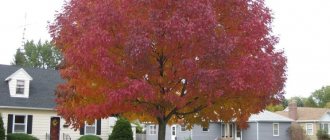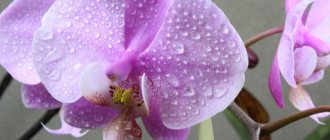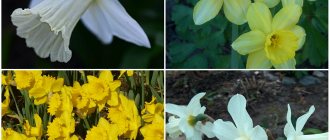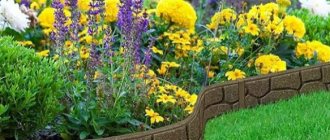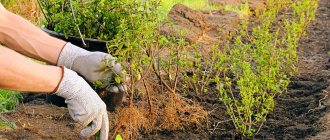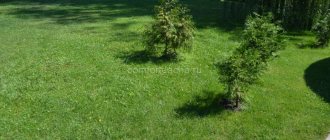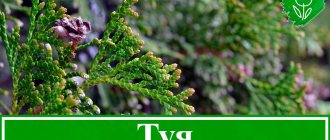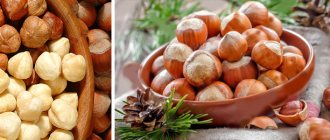Description of the plant
Unpretentious to care for, astilbe with openwork leaves is a perennial. The height of the stems ranges from 10 cm in the “dwarf” group, to one and a half meters long in the “high” group.
Astilbe's homeland is North America, Japan, the family of herbaceous plants is “Saxifrage”. It blooms from June to September, combining small flowers into a single inflorescence reaching half a meter in length.
The palette of flowers, depending on the variety, is found in: white, red, lilac, as well as purple and pink shades. The foliage is large, carved, in an amount that allows you to hide the stem and add splendor. Remains effective even after the inflorescences fall off. Original leaves from green to burgundy will add splendor to the area in the shade. When you combine dwarf, low, medium, tall species, you will get wonderful flowers and flower beds.
Growing rules
The answer to the question depends on the variety: where to plant - in the shade, partial shade or on the sunny side? This is mainly a shade-loving grass, and only a few varieties can tolerate the sun. The best option for growing a moisture-loving crop is near water bodies. Establishment, growth rate, flowering depend on the correct selection of soil formation, soil preparation and growing location. The density of planting and the deepening of the planting hole are individual, depending on the grade.
Soil and site selection
The gardener is puzzled by the questions: “Which transformation layer to use? What place should I choose for growing? The clear answer is in pre-dug and cleared soil of weeds, in shade, with the presence of groundwater. There are no special requirements for soil quality. If the area is highly acidic, sprinkle it with wood ash or dolomite flour. Planting and care in an open, sunny place is not comfortable for the desired long-term flowering. Stagnation of water and drought are contraindicated, so choose a place for growing astilbe on a hill. An excellent option is to plant it near a pool, fountain, or natural body of water.
Watering
The humidity of favorable soil is an important answer to the question - astilbe cultivation and care in open ground. The more sunlight hits the flower, the more often watering should be organized. The wetness of the substrate is a protection.
Feeding and fertilizer
It grows in one place for 5 years or longer. Maintains a healthy appearance and does not require replanting or dividing the rhizome. It is necessary to fertilize with complex nitrogen fertilizers in the spring for the timely growth of new foliage. Apply humus to the soil near the bush and hill up. At the time of flowering, fertilize with phosphorus; after the color drops, potassium fertilizers are acceptable. Having completed feeding, mulch with a layer of peat up to 5 cm thick.
Wintering
Winter frosts do not harm the crop, but prevention will be useful for flowering next season. Applying mulch to the surface will save you from possible freezing. Shelter for the winter is not required.
Spring care
At the beginning of spring warming, use a rake to clear the soil of leaves remaining from last season. The peculiarity of the culture is that buds appear on the upper part of the root in the spring. During the period of gaining strength and growth, the buds form young rhizomes, which should not be on the surface. To do this, do not forget to sprinkle the bush with soil.
Transfer
At the age of five years, astilbe needs to be transplanted, which is carried out in spring or early autumn.
Replanting can be done without digging up the plant completely: just separate part of it, fill the pruning area with ash and add fresh soil to the resulting hole, and transplant the resulting seedling to a new place. After such a division, astilbe will delight you with its flowering next year.
How to properly make drainage for flowers and select the right materials? Snowy shrub viburnum buldenezh. A winter fairy tale in your garden in summer.
In order for the planted plant to remain healthy for as long as possible and delight with its lush flowering, you need to provide it with proper care.
Caring for astilbe includes a number of actions that take into account the characteristic characteristics of the plant. Watering
The roots of astilbe grow upward, releasing young roots, as a result of which it is very important to prevent loss of moisture in the top layer of soil.
On hot days, it is necessary to water the plant twice a day: in the morning and evening hours, accompanied by watering by mulching the soil, which will prevent the soil from drying out. Insufficient soil moisture threatens the death of young plants and is the cause of withered, curled leaves and shredded inflorescences in adults. On the other hand, abundant watering in August-September helps to lengthen the inflorescences.
Top dressing
To maintain lush and long-lasting flowering, it is necessary to fertilize astilbe twice a year.
The first occurs when young shoots appear in early spring. Complex fertilizers with a high nitrogen content are suitable.
The turn for the next feeding comes in the fall, after the astilbe has faded. This time, preference is given to phosphorus and potassium compositions, mainly in liquid form, to avoid burns on the stem. After fertilizing, the soil needs to be loosened and mulched.
Trimming
Astilbe pruning, during which the above-ground part of the plant is cut off at soil level, is done in late autumn.
After flowering, you can cut off all faded inflorescences, whose place will soon be taken by new leaves.
Astilbe will withstand the most severe frosts well, if you remember that the roots of the plant growing upward reach the soil. Mulching will help save bare roots from freezing. In late autumn, you should fill the gaps between the bushes with pine needles or sawdust and cover the bush with two layers of spruce branches or bark.
How to care for astilbe
Care has a basic requirement - frequent watering. It is necessary to pay attention to the peculiarities of air temperature changes in spring. During this period, it should be covered with spruce branches or other natural material and mulched. The flower has developed resistance to winter frosts.
Winter cold is not terrible, but spring temperature changes can affect health and flowering. To avoid loss, you should wrap the crop with natural auxiliary materials until a stable air temperature is established.
Growing astilbe flowers, how to speed up flowering
Early flowering depends on autumn work. Select bushes with 5–10 buds above the rhizome, dig them up and transplant them into pots filled with moist peat. Transfer the filled container to a cool, frost-free place. The room temperature should not fall below 0° and above 3°C. In February, transfer the containers to a greenhouse, which will warm up to 10°C, and keep them at this temperature until the first leaves appear. After 2 - 3 weeks, after the leaves have grown stronger, raise the air temperature in the greenhouse to +20C, creating a darkening effect. This will help you “wake up” earlier. During the growing season, do not fertilize the crop, only water it.
Inflorescences
Flowers differ by categories of inflorescences. There are four main forms: paniculate, pyramidal, rhombic, drooping.
Any variety requires pruning of faded flowers. You should not wait for seeds to form if the ornamental plant on the site is intended to decorate the landscape. Removing dead inflorescences will prolong flowering. At the end of the flowering season, prune the bush as a whole. Before wintering, cut shoots to a level of 2–5 cm. from the soil, mulch with natural organics or inorganic crushed artificial materials.
Reproduction methods
Features of cultivation depend on proper propagation and transplantation of the crop. Procedures are carried out in the off-season in three ways:
Dividing the bush
Dig up, cut off the leaves, carefully clean the rhizome from spoilage. Cut with a sharp knife into separate sections, each with 4-5 buds, plus part of the healthy root. Plant the cuttings in prepared holes at a distance of 25–30 cm from each other. Mulch with pine needles or moss, water daily and periodically loosen the soil. Plants that are five to eight years old are divided.
Division by buds
Cut the buds together with a small piece of roots with a knife neutralized in a manganese solution. Sprinkle the cut area with crushed activated carbon or wood ash. Place the buds and part of the root in a container filled with gravel and peat at a ratio of 1:3. Cover the cutting with film or glass. Ventilate and moisten once a day. After germination and strengthening of the seedling, plant it in a flower garden.
Propagation by seeds
Rarely used, but real action. To breed a varietal crop, buy seeds in flower shops, because... collected at the site are unlikely to produce results. Before sowing, preventive work should be carried out. Carry out stratification, i.e. seed preparation. More details - take the seeds out for 20 days in a dark, cold place, with a temperature from -5° to +4°C. At the end of the specified period, sow the seed in boxes with moist, fertile soil. Move to a bright and warm room. Ventilate planting containers. A month later, a sprout with leaves will appear; it’s time to harden it. Move the box containing containers of sprouts to a shaded area, away from the north side. Keep in mind that excessive watering, as well as drought, will harm the seedlings. When 3 leaves appear on the sprout, move the plant to a flower bed.
Planting cuttings with a “heel”
In early spring, a renewal bud is cut out from the bush, which is a bud of an overwintered plant from which a shoot has begun to develop, along with a piece of root. This part of the rhizome is called the “heel”.
Such cuttings are planted in greenhouses using a fertilizer mixture prepared in the same way as when planting in the ground. This substrate is poured onto the soil in a layer 5-7 cm high.
To plant astilbe in the garden you will have to wait a whole year, but flowering will begin within a few months after planting.
Diseases and pests
Amazing plant. Strong immunity to frost, blooms in a variety of colors for a long time. There is another plus - pests do not like this crop. Minor exceptions do occur. Snails or aphids have appeared on the bush - spray with insecticides or dissolved laundry soap. The root is infected with a root-knot nematode - destroy the infected bush; fighting this pest is useless. Treat the soil around the removed shrub; do not use the planting area for a long time. The pennies on the foliage are collected by hand to avoid the proliferation of mucus.
In the photo there is a slobbering pennice
Popular types
Breeders have bred more than 30 varieties of the crop. Varieties are divided into groups, classified according to size, color and shape of inflorescences. The most resilient are the tall ones.
Astilbe David
The height reaches one and a half meters, with spreading forms. The foliage is light green in color, double and triple pinnate in appearance. The flowers are small, pink, lilac. Inflorescences reach 40 cm. It blooms for an average of two weeks in mid-summer. The variety is unpretentious; care consists of timely watering and fertilizing with organic substances. The location for growing is exclusively shady.
Astilbe naked
The variety is dwarf, the height is not higher than 20 cm, the width grows up to 15 cm. Frost-resistant, moisture-loving, not whimsical. Openwork leaves add splendor. Small flowers, collected in inflorescences, are soft pink. It is recommended to plant on rocky soil near a pond, 2 - 3 pieces per seat. It pleases until late autumn with the bronze hue of the foliage.
Astilbe chinensis
The stem is woody, solitary, with red hairs. Reaches one meter in height. Inflorescences are collected from red, purple or white flowers. The leaves are lush green, lacy, covered with villi. Blooms throughout the summer. The peculiarity of the variety is that it has medicinal properties. Used as an infusion and decoction of rhizomes and leaves. Used for bruises, post-operative pain, rheumatism.
Astilbe japonica
Grows widely, height up to 70 cm. Leaves are feathery and glossy, bright green. The flowers are fragrant, white or pink. Diamond-shaped inflorescences, about 30 cm, bloom in peak summer. When it fades, the inflorescences will decorate the bush for a long time. A bouquet of dried flowers looks beautiful. Preferred location: shade, watery soil. This elegant variety is frost-resistant and will easily take root after propagation.
Astilbe simplefolia
The shoots are of medium length, about 45 cm, and the parameter is maintained evenly in width and height. The leaves are carved, shiny, rich green. The inflorescences look white and delicately pink. Does not tolerate drought, frost-resistant crop.
Astilbe Arends
A large group of crops, hybrid forms. Medium and high varieties have been bred. The root is powerful, cord-like. After propagation by dividing the rhizome, it quickly recovers. The palette of inflorescences is rich in color. The leaves are toothed, pinnate, green with a shine. Blooms all summer. Frost-resistant. The priority in choosing a location is partial shade, the soil should be watery.
Astilbes in garden design
Astilbe has been used in landscape design since the beginning of the 20th century. Thanks to the variety of shapes and rich color palette of inflorescences, designers use it to bring the most daring ideas to life.
Astilbe bushes look appropriate against the background of picturesque alpine hills or group plantings of conifers with their rich green needle-like foliage
Landscaping with astilbe is often included when designing artificial reservoirs, planting the perennial as a frame for the source. Bluebells, heucheras, and daylilies can be a worthy addition to a picturesque corner.
It also looks harmonious in flower arrangements. A successful neighborhood can be achieved by planting shade-loving ferns and hostas next to astilbe. Dwarf varieties of this beautifully flowering perennial are a real decoration for a small shady flower garden. In the spring, while the leaves on the astilbe have not yet blossomed, the empty space around it in the flower garden can be filled with miniature crocuses and snowdrops.
Plants with large, dense leaves help balance the openwork foliage of a perennial: hosta, rogersia, bergenia, mantle, kupena, lilies of the valley, hellebore
One of the reasons for the popularity of astilbe is its ability to live in the shade of trees. Feeling comfortable even in shady conditions, it never ceases to delight with colorful flowering. When cut, exquisite astilbe inflorescences are used in bouquets and to create floral arrangements.

